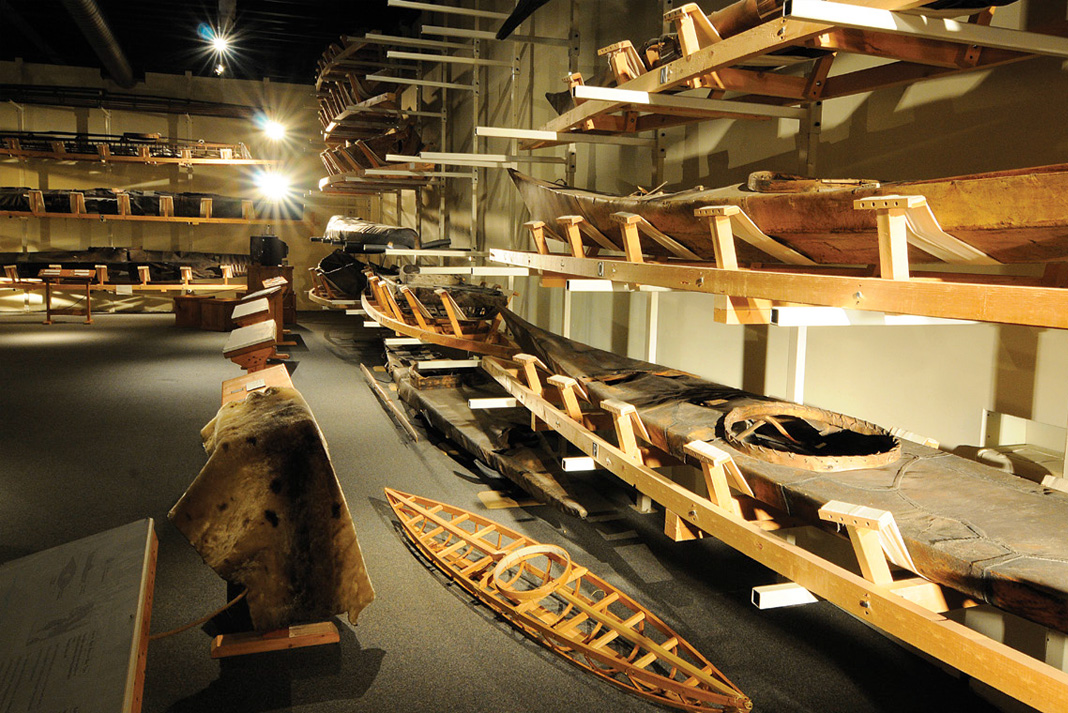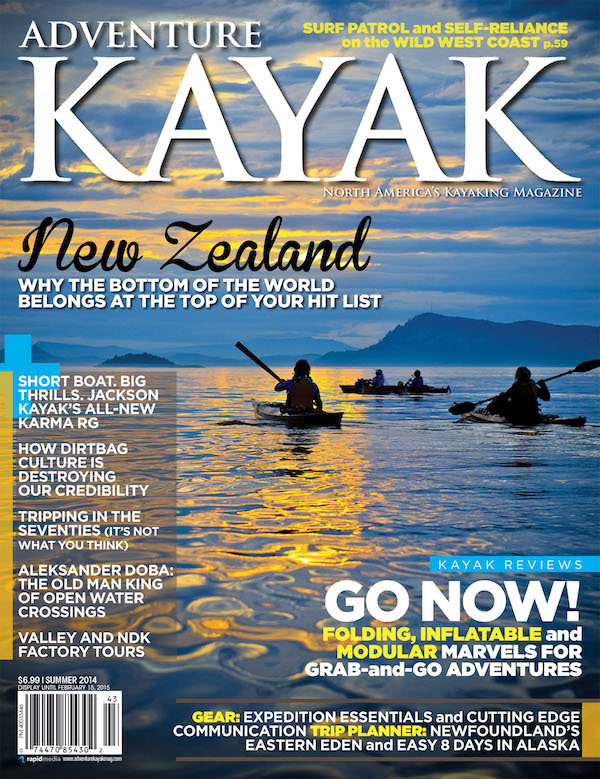“It’s astonishing just how sophisticated these kayak designs are,” says Canadian Canoe Museum curator Jeremy Ward, gesturing to a wall of elegant Greenland kayaks. “If you look at the influences of these very traditional forms on contemporary touring kayaks, you can see all of the design hallmarks.” The narrow beam, low volume and hard chines that today allow efficient touring and rolling, were originally designed to make the Greenland kayak the ultimate hunting craft. “If you’re hunting narwhal, beluga or seal with a harpoon, to get close enough you need a long, narrow, fast kayak, which is inherently unstable,” explains Ward. “One hand throws the harpoon while the other holds the paddle out to the side to stabilize the kayak.”
Across the room, a display of baidarka from the Western Arctic and Aleutian Islands further illustrates how hunting habits influence kayak design. “Baidarka is not an Aleutian word, it’s Russian,” says Ward. “During the Russian fur trading period, baidarka were used to access the kelp beds and hunt sea otter. This is a very rare three-person baidarka from the late 19th century that may have had a Russian agent overseeing the hunt in the middle cockpit with a paddler at either end.”
The gunwale of this circa 1930s East Hudson Bay kayak frame is composed of several pieces of smaller wood joined together, illustrating the resourcefulness
of early builders and their clever use of available materials. “Working above the treeline, assembling pieces of driftwood into a kayak frame is a tough job,” explains Ward. “You’d be accumulating wood over a long time to get enough to put together a framework.”
The skins of ringed seals, like this one, were preferred for covering the kayak frame. The cleaned skins were stitched together along waterproof, overlapping seams using braided sinew or, in more recent times, scavenged materials such as dental floss or sewing thread. Once the skins were joined into a sheet, it was stretched tightly around the kayak and sewn along the top.

“We had an Inuk visitor from Greenland who was an avid competitive kayaker, and he said ‘You need to take the skins off of these boats,’” Ward recalls. “When you look at the frame stringers, you can actually see the hull is being compressed by the shrinking of the skin over time. From a traditional user’s point of view, the skin was something that would get worn out or rot, and you would just remove and replace it. But for us to remove the skin is to take away the female contribution to the hull. Typically the framework was made by men, and the skins were sewn together in a stitching party by women. It’s a real community effort to make one boat.”
Along with ever-changing displays, the museum offers hands-on programming for visitors. This model kayak frame is one of five kits created by museum staff for school programs. “We based the design on a Copper Inuit kayak and used mortise and tenon joints and artificial sinew lashing so the kit can be assembled and taken apart many times,” explains Ward.
This article first appeared in the Summer 2014 issue of Adventure Kayak Magazine. Subscribe to Paddling Magazine and get 25 years of digital magazine archives including our legacy titles: Rapid, Adventure Kayak and Canoeroots.




